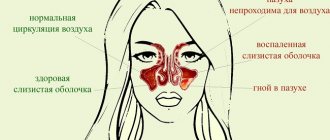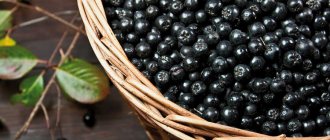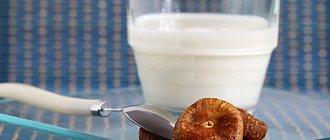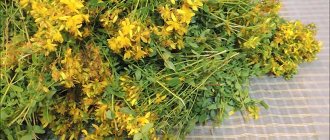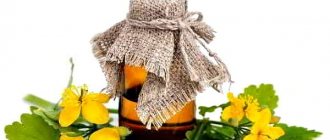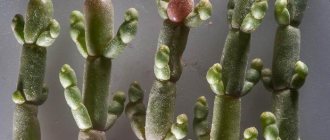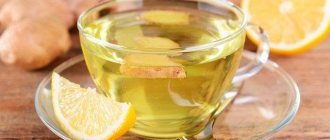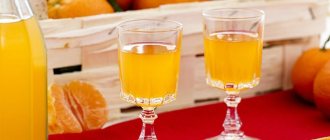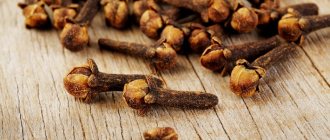Sinusitis becomes a consequence of incompletely cured rhinitis. The disease affects the paranasal sinuses. In this disease, they fill with mucus or pus, causing nasal congestion and headaches. In such a situation, you definitely need to go to the doctor and buy the medications prescribed by him at the pharmacy.
However, industrial medicines can be supplemented with traditional methods of therapy. Herbal decoctions, inhalations, and homemade drops can help the patient. However, folk remedies for sinusitis in no way replace the achievements of traditional medicine.
Treatment of sinusitis with folk remedies also requires prior consultation with a doctor. It is important to consider the compatibility of various medications and the characteristics of the patient’s body. Otherwise, herbs for annoying sinusitis will cause harm instead of the desired benefit. We will tell you below how to treat sinusitis using traditional methods.
The advantages of traditional medicine against sinusitis
Traditional methods of treating purulent sinusitis are good because they act more gently than industrial drugs. They relieve inflammation and relieve nasal congestion. A person can breathe normally for some time and get enough sleep at night (if he uses the treatment before going to bed). There are cases when alternative treatment is especially useful:
- In patients with chronic inflammation of the paranasal sinuses. They are usually used when the main symptoms of an exacerbation are relieved. Folk remedies relieve a person from signs of a long-term inflammatory process. They relieve the feeling of heaviness in the sinuses, headaches, nasal discharge, and nasal congestion.
- If a person is sick with acute sinusitis, traditional medicine complements traditional methods of treatment. It relieves unpleasant symptoms - headaches stop, discomfort in the nose is eliminated. At the same time, antibiotics or antiviral drugs recommended by the attending physician eliminate the causative agents of the disease.
- During the cold season - autumn, winter and early spring, this is an excellent way to prevent the occurrence of acute sinusitis. It is also an excellent prevention of exacerbation of chronic inflammation of the maxillary sinuses.
- After recovery of a person suffering from sinusitis, folk recipes allow you to restore immunity. They also normalize the functions of the paranasal sinuses and the nose itself. A person returns to an active life faster.
Clinical picture of various types of sinusitis
Depends on the cause that led to sinusitis and the nature of the development of the pathological process. In the acute form of a mild course, the following symptoms will be noted:
- mucous, less often mucopurulent discharge from the nose;
- impaired sense of smell;
- a slight rise in temperature to subfebrile levels (up to 37 ° C);
- difficulty breathing through the nose;
- minor pain in the area of the maxillary sinuses (above the upper jaw);
For moderate and severe:
- general weakness, increased fatigue, malaise, headache (symptoms of intoxication);
- increased body temperature over 38 °C;
- discharge from the nasal passages becomes more abundant, often taking on a purulent character (green or yellow) with a foul odor;
- severe pain in the projection of the sinuses, aggravated by sneezing, blowing out the nose, tilting the head, chewing;
- swelling of the soft tissues of the face and eyelids;
- high risk of intracranial complications.
Patients with chronic sinusitis may experience the following symptoms:
- decreased sense of smell;
- a feeling of heaviness in the projection of the maxillary sinuses;
- bad breath;
- sore throat or slight sore throat associated with periodic leakage of mucus from the affected sinuses;
- swelling of the eyelids, manifestations of conjunctivitis, especially in the morning;
- slight weakness.
During an exacerbation, the condition worsens. The following symptoms appear:
- severe pain in the area of the maxillary sinuses, aggravated by tilting the head forward;
- increased fatigue, weakness;
- after seven to ten days, the discharge becomes purulent;
- the temperature stays at 37 - 37.5 °C.
Allergic sinusitis
This form is characterized by an often relapsing course, especially if the provoking allergic factor has not been eliminated. Allergic sinusitis can occur to absolutely any type of allergen - house dust mite, pollen of various plants (ragweed, wormwood, etc.), flowering trees (birch, poplar, etc.), products (peanuts, chocolate, fish, eggs, citrus fruits). It is characterized by the following clinical picture:
- mucous discharge from the nasal passages;
- in most cases, the disease is seasonal;
- itching in the nose;
- lacrimation;
- headache;
- pain or a feeling of heaviness in the maxillary sinuses;
- slight general deterioration in condition.
Viral sinusitis
Caused by various types of viruses: adenovirus, parvovirus, respiratory syncytial and others. In some cases, there is an asymptomatic course. May manifest:
- headache, malaise, feeling of weakness;
- increased body temperature;
- decreased sense of smell and taste;
- discharge from the nasal passages of clear, mucous contents;
- toothache in the projection of the upper jaw.
Bacterial sinusitis
Most often caused by streptococcus, moraxela, staphylococcus, and Haemophilus influenzae. The main symptoms are:
- severe pain in the projection of the maxillary sinus;
- severe difficulty breathing through the nose;
- discharge from the nasal passages of various colors and character - light yellow, green, brown, thick, jelly-like, etc.;
- loss of smell;
- pain in the upper jaw;
- increase in body temperature to 38.5 °C.
Fungal sinusitis
In most cases, it is formed against the background of reduced immunity, after long-term treatment with antibacterial drugs, cytostatics (Methotrexate, Cyclophosphamide, Hydroxyurea) or hormones (Methylprednisolone, Prednisolone). The following symptoms of fungal sinusitis are distinguished:
- deterioration of general condition;
- pain in the maxillary sinus area;
- white cheesy discharge from the nasal passages, sometimes streaked with blood;
- temperature rise to subfebrile levels.
If you have similar symptoms, contact conscientious specialists.
The treatment and diagnosis of this disease is carried out by ENT doctors and therapists.
Features of self-medication with traditional methods
There are a huge number of methods for treating sinusitis using natural remedies at home. Each of them has its own pros and cons. But all methods of traditional treatment are united by a number of principles.
- Sinusitis takes a long time to cure if only traditional therapy is used. Treatment can take from one to three to four months. Do not expect that traditional medicine will help you right away; it takes time to get the effect.
- If treatment is being carried out for the first time, it is important to start with small dosages of bee products, oils or medicinal herbs. The dose is increased gradually. This technique reduces the likelihood of allergies or idiosyncrasies (intolerance reactions).
- Do you want to be treated with herbal infusions? You are absolutely right! Herbs for sinusitis significantly alleviate the course of the disease. However, you need to start the process with a decoction of any one medicinal plant. Over time, other components can be added.
- For drops, inhalations and ointments, plants and other components must be collected in environmentally friendly places. They should also be properly dried and prepared for use. If such a solution is not possible, it is better not to risk it. Treatment is stopped. The patient must see a doctor to adjust the therapy. If you don’t know where to collect herbs, buy ready-made herbs at the pharmacy.
- If the patient gets worse or does not recover, or complications arise, this is a reason to go to a specialist. Treatment is suspended. The treatment regimen is changed immediately.
The best methods of traditional treatment of sinusitis
As mentioned earlier, the main methods of treating the inflammatory process in the sinuses are ointments, drops, inhalations and nasal rinsing. Traditional medicine knows many recipes for medicines for carrying out medical procedures. Let's take a closer look at the treatment of sinusitis with well-known folk remedies - the most effective of them are given below.
Everyone has heard that you can roll a boiled egg through a handkerchief through your sinuses (a friend or acquaintance probably told you about it). But you can eliminate inflammation and improve blood flow just as well in other ways. You can apply homemade drops to the nasal mucosa; people also do rinsing and inhalation.
Homemade ointments
For sinusitis, ointments are necessary to numb the inflamed areas and relieve swelling of the tissues. They also help restore the nasal cavity and regenerate the damaged mucous membrane. This is a local therapy. Here are some effective recipes:
- Take two tablespoons of regular aloe juice. Add dioxidine ointment (50 g) to it. Add two to three drops of menthol oil to the mixture.
- You can mix honey and sunflower, olive or corn oil, as well as onions or garlic. The honey is melted using a water bath. Add one tsp there. garlic or onion juice, as well as one tablespoon of your chosen oil. The ointment is ready.
- Is there Vishnevsky ointment in the house? This is amazing! One tablespoon of this product is enough for you. Just add onion juice, propolis, aloe juice and honey. 1 tsp is enough. each component. The mixture will be more effective if it is heated.
- Laundry soap can be used not only to wash your hands or wash clothes. This is a wonderful medicine! It is mixed with propolis tincture in alcohol in equal parts, honey and onion juice (in equal quantities). The product is heated in a water bath and then stirred thoroughly. Use when cool.
All these ointments are used the same way. They impregnate cotton swabs, which need to be inserted into the nasal passage on the side of the sinusitis (both in a bilateral process). The person should lie with a small pillow under his shoulders so that his head is slightly tilted back. This treatment will take about a week and a half. Thanks to each of these remedies, the nose is well cleaned, and pus is drawn out of the affected sinuses.
Homemade nasal drops
You can buy pharmacy nasal drops. But it happens that they do not help at all or cause allergies. Or you don’t want to spend money on medicine. Then you can try treating sinusitis with folk herbal remedies - the most effective ones are praised by reviews on the Internet.
Cyclamen
An example is Cyclamen. This is a small plant that is often found in rooms - women love to care for them. Cyclamen have small roots and pink flowers. Moreover, each plant can provide from ten to fifteen drops of medicine! The most useful part of Cyclamen is the root. It is sold in markets and specialty stores, as well as in pharmacies.
To make drops, the root must be grated. Healing juice is squeezed out of the mass. It is mixed with warm boiled water. For every 200 ml of water, one teaspoon of juice is enough. Moreover, increasing the concentration of the latter is not recommended. Cyclamen juice in large quantities is poisonous.
Treatment with similar folk remedies for sinusitis lasts 7 days. Every day you need to bury 2 drops of the product in your nose - the procedure can be carried out in the mornings or evenings. Moreover, after this the affected area is massaged. The patient needs to lie down or sit with his head thrown back.
As a result of therapy, a person's sinuses are cleared. Pus and mucus are removed. However, allergies can become a complication of therapeutic measures. Therefore, Cyclamen is used with caution. It is also dangerous for pregnant women.
There is a pharmaceutical product called Sinuforte. It is also made using cyclamen root. The medicine perfectly drains the affected sinuses and removes nasal contents.
Aloe juice
This liquid perfectly cures inflammation, including severe sinusitis. Moreover, it is often added to industrial medicines. The effectiveness of aloe juice has been confirmed by modern medical science - it is a reliable folk remedy for treating annoying sinusitis. It has a number of positive effects:
- relieves swelling;
- eliminates inflammation;
- promotes the process of regeneration of damaged nasal mucosa.
This is why it is so often used in medicine to relieve headaches and stuffy noses. Moreover, there are several recipes for sinusitis remedies with aloe. Here are some examples:
- Just bury the extract of this plant in your nose. The procedure is repeated three times a day. Two drops are enough for each dose.
- A tablespoon of aloe extract is mixed with onion juice. These are also excellent homemade nasal drops. The feeling is not very pleasant: there may be a burning sensation.
- Celandine for sinusitis in combination with aloe juice and honey is also very effective. This remedy for sinusitis is instilled into the nose three times a day. The number of drops is determined individually.
- Mix Kalanchoe and aloe juices in equal quantities. Then add a pinch of salt and 1 tsp. ordinary honey Place three drops in each nasal passage twice a day.
Other drops
If the patient cannot tolerate aloe or cyclamen, treating sinusitis with folk remedies is still possible. But you need to take other components to prepare them. Here are other examples of recipes:
- Chamomile drops. Here you will need 100 g of chamomile decoction. Add 1 tsp to them. Aloe extract. Moreover, they are instilled every day - twice, two or three drops. This medicine allows you to destroy bacteria and restore the affected mucous membrane of the nasal cavity.
- If a person suffers from purulent sinusitis, hydrogen peroxide will solve the problem. You should mix a 3% solution of hydrogen peroxide with twice the amount of ordinary water. First, instill one drop daily. If no complications arise, the dose can be increased to two or three drops twice a day. Moreover, immediately after the procedure you need to blow your nose.
- Sea buckthorn oil is also very effective - reviews confirm this. Sea buckthorn oil for sinusitis (3 tablespoons) is mixed with onion juice (1 tsp). Instillations are done twice or thrice a day.
- Carrot juice is mixed with beet juice. Liquids for this are taken in equal shares. Instillations are performed several times daily. Each time, apply two or three drops into each nasal passage. If burning or tingling occurs, beetroot juice is diluted with water in equal proportions.
- Proto-head drops with silver. Silver can destroy harmful microorganisms. Thanks to its antibacterial properties, it helps with inflammation - they are made in various pharmacy chains at the request of the user. They are treated for 14 - 21 days. An excellent drying and disinfectant for the nasal cavity and inflamed sinuses.
Preparing drops for sinusitis at home is not difficult. Moreover, they improve the patient’s well-being after seven days. However, it is important to know some points.
To obtain aloe extract, only the lower leaves of the plant are suitable, which must be healthy. Aloe must be at least three years old. Treatment of sinusitis with herbs is not suitable only for allergies and idiosyncrasies.
What and how to rinse your nose?
Traditional medicine for annoying sinusitis also suggests rinsing your nose. This method allows you to cleanse the affected areas of pus and mucus. Moreover, a solution for rinsing your nose can be made from various components. Let's give them examples.
- Chamomile decoction. Eliminates irritation and relieves inflammation that has begun. It needs to be brewed in much the same way as regular tea. A glass of boiling water is mixed with half a tsp. dry grass. When the broth has infused and cooled a little, rinse the nose with it.
- Propolis. Another recipe for purulent sinusitis. Propolis tincture with alcohol (20 or 25 drops) is diluted with two glasses of water. Then add 0.5 teaspoons of salt there. Stir the solution well and rinse the nose.
- Treatment of sinusitis with celandine and salt. This mixture treats inflammation of the sinuses. The mucus thins, the blood vessels are toned. The nose is washed with clean water, salt and celandine juice. Moreover, one teaspoon of celandine extract and half a teaspoon of tea are mixed with water (0.5 l).
Steam inhalations
An effective method of treating acute sinusitis is inhalation. Traditional medicine offers many options. Here are recipes for the treatment of sinusitis using the inhalation method:
- Do you like jacket potatoes? Cook it immediately! Then drain the water and mash the potatoes. Next, wrap yourself in a towel and breathe the resulting steam for a quarter of an hour.
- Boil a decoction of ordinary marigolds. Add eucalyptus oil there - one or two drops is enough. Breathe the steam for a quarter of an hour (you also need to cover yourself with a towel.
- Boil water (one liter is enough). There you need to add eucalyptus oil and tea tree oil (four drops each). Black cumin and ginger are also added (two drops each).
However, no matter what folk remedy for sinusitis at home you choose, be sure to clean both nasal passages. Moreover, after the drops that constrict the blood vessels, you need to wait 5 - 10 minutes. Only after this can you begin the procedure. Also, during treatment, you can drink strawberries, plantain or St. John's wort for severe sinusitis - this will liquefy the mucus.
Also, steam is inhaled exclusively through the nose. Inhalations should be done without haste, with extreme caution. Otherwise you might get burned. If used correctly, relief will come.
Moreover, the steam used for inhalation heats the face. If inhalations are used incorrectly, burns can occur.
Physiotherapy
Massage
Folk remedies for sinusitis include not only drops, ointments and inhalations, but also massage, as well as a set of exercises. It is important to massage the nose at acupuncture points. Then blood circulation is activated. The nasopharyngeal muscles are strengthened, congestion is completely relieved, and the sinuses are easier to drain. Moreover, the duration of the massage is from five to ten minutes - this is done 2 - 3 times daily.
Breathing exercises (exercises)
Breathing exercises allow you to get rid of nasal congestion, provide air access to the sinuses, and also get rid of the symptoms of rhinitis and sinusitis. Another plus of special exercises is absolute safety - everyone can use them. Even small children are treated with this method.
Medicines for sinusitis
The inflammatory process in the maxillary sinuses is treated with medications that are prescribed taking into account the symptoms and stage of development of sinusitis.
The main types of drugs for the treatment of sinusitis:
- Mucolytics
- Decongestants
- Analgesics
- Corticosteroids
- Bacteriophages
- Antibiotics
Treatment of sinusitis is carried out according to a certain scheme, which is prescribed only by an ENT doctor. Usually the drugs are used in combination.
Useful video about inflammation of the maxillary sinuses:
Popular ointments
The treatment regimen may include medicinal ointments. The most popular ointments include the following:
| Name | Action |
| Vishnevsky ointment | The drug has strong antiseptic properties, helps remove pus and enhances local blood circulation. |
| Levomekol | It has pronounced antibacterial properties and fights various types of pathogenic microorganisms. |
| Ichthyol ointment | Has an analgesic and antiseptic effect. Helps remove accumulated contents out. |
| Fleming's ointment | The components of the preparations have antiseptic, anti-inflammatory and antibacterial effects on the mucous membrane. |
| Doctor Mom | It has an irritating, analgesic and anti-inflammatory effect. |
In addition, ointments for sinusitis help eliminate inflammation and swelling, clear the nasal cavity of mucus and restore breathing. A thin layer of ointment is applied to the tampon, which is placed in the nasal cavity.
Antibacterial therapy
It is advisable to use antibiotics if sinusitis is of bacterial origin. Before the doctor prescribes antibiotics, a nasal culture must be performed. This will allow us to determine the sensitivity and resistance of pathogens.
Local and systemic antibiotics can be used to treat sinusitis. The first group of antibacterial drugs includes: Isofra, Polydexa, Bioparox. Available in the form of drops or nasal spray.
For prolonged sinusitis with profuse purulent nasal discharge, systemic antibiotics are prescribed, which are taken orally.
The otolaryngologist selects antibiotics based on the results of bacteriological culture.
For sinusitis the following may be prescribed:
| Group | Name |
| Penicillin antibiotics | Amoxicillin, Flemoclav, Flemoxin, etc. |
| Cephalosporins | Cefixime, Zinnat, Cefotaxime, etc. |
| Macrolides | Josamycin, Macropen, Clarithromcin, etc. |
The course of taking antibiotics should not be less than 5-7 days. And if you feel better, you should not stop taking the drug.
Nasal rinsing
When treating sinusitis, rinsing is effective. This method dilutes the pus and activates its outflow. A good means for rinsing is sea or salt water, as well as antiseptic solutions.
Popular sinus rinses are shown in the table:
| Drug name | Action |
| Aqua Maris | Preparations based on sea water. They reduce swelling and inflammation, reduce the negative effects of antibiotics and restore breathing. |
| Aqualor Soft | |
| Dolphin | |
| Furacillin | |
| Iodine | The drugs have a pronounced antibacterial and antimicrobial effect. Reduce the activity of pathogenic microorganisms and clear the nasal cavity of mucus. |
| Dioxidine | |
| Chlorhexidine |
The procedure can be carried out in a hospital or at home. If washing is done at home, then a syringe, syringe or a special watering can is used for this. Take the medicine into the syringe, tilt your head to the side and pour the medicine first into one nostril, then into the other.
It is important to remember that the procedure should be performed when there is no nasal congestion. If necessary, use a vasoconstrictor. Using the method of rinsing the nasal cavity on your own without using other methods is ineffective.
Compresses for sinusitis
At home, it is recommended to apply compresses to the maxillary sinuses. One of the popular compresses is saline. Mix a spoonful of honey and a teaspoon of sea salt and apply the mixture to the sinus area. Next, wrap it up and leave for 2 hours. In this case, you cannot lie down in a lying position.
Other compresses for sinusitis:
- Garlic compress. Pass a few heads of garlic through a press and add a teaspoon of butter. Mix well and put on your sinuses. It is good to perform the procedure at night.
- Compresses with camphor alcohol. Take a small cotton scarf and lightly moisten it in warm water. Then spray with camphor alcohol and place on the forehead. It is important to wrap the compress area well.
- Potato and onion mixture. Boil a few potatoes along with onions and crush. Place the mixture on cheesecloth and wrap it well. Apply warm to sinuses.
When treating sinusitis with compresses, you should not use ingredients that can burn your facial skin. One compress per day is enough.
More information about sinusitis can be found in the video:
Treatment of sinusitis with inhalations
Inhalation therapy is used to target the drug directly to the area of inflammation. You can use ready-made medications for inhalation, or add the necessary medications to the saline solution.
The main drugs for inhalation for sinusitis:
| Group of drugs | Drug name | Action |
| Bronchodilators | Berotek, Salbutamol, Berodual, Ventolin | The drugs expand the lumen of the bronchi, thereby improving the discharge of pus. |
| Antibiotics | Gentamicin, Lincomycin, Fluimucil, etc. | They have antibacterial and antimicrobial effects, inhibiting the growth and reproduction of pathogenic bacteria. |
| Antiseptics | Miramistin, Dekasan, Furacilin, etc. | Antiseptics have disinfectant and antimicrobial properties |
| Glucocorticoids | Flixotide, Pulmicort, etc. | Drugs in this group have a pronounced anti-edematous and anti-inflammatory effect. Corticosteroids are usually prescribed to reduce the allergic reaction. |
| Mucolytics and expectorants | Lazolvan, Ambrobene and others. | They have an expectorant effect, dilute and remove mucus from the respiratory system. |
Medicines for inhalation are usually dissolved in saline solution. Inhalation should be carried out no more than 15-20 minutes a day. Before the procedure, it is recommended to clear the nose of mucus and drip a vasoconstrictor. Do not inhale if your body temperature is high and you feel unwell. After the procedure, it is not advisable to go outside or eat food.
It is important to remember that many drugs are not compatible with each other and this may result in adverse reactions, for example, in the form of bronchospasm.
Other folk medicines
Traditional medicine against inflammation in the paranasal sinuses is not limited to the remedies mentioned. You can use burnaki for sinusitis, as well as horseradish for sinusitis. Also, recipes for treating severe sinusitis are made from radish, wax, herbal tinctures, etc.
If burnaks are not suitable for sinusitis, you can choose another effective method of treating worsened sinusitis. Birch buds, thorns and lemon with horseradish or horseradish with lemon juice are good for sinusitis. You can also use horseradish or cones of coniferous plants.
Bee products - propolis, honey and wax
Honey is very useful. It is added to solutions for internal use. It is also used to make nasal drops and ointments, as well as a solution for rinsing the nose. Most popular recipes:
- One tablespoon of honey is dissolved with ordinary water (200 ml). Rinse your nose with this product.
- If you are tired of the feeling of dryness in your nose, or a burning sensation appears from vasoconstrictor medications, the situation can be corrected. 1 tsp honey is mixed with ordinary glycerin (30 g). Cotton is dipped into this product and inserted into the nose. This is done in the mornings and evenings of every day.
- Propolis has excellent antiseptic properties. After all, bees use it to disinfect honeycombs. To do this, use an ointment with a propolis base - preferably 20 percent. It is mixed with onion or garlic juice. This mixture is placed in the nose for a quarter of an hour daily.
Herbal tinctures
Traditional methods for treating severe sinusitis include herbs. They are needed to strengthen the immune system. This way the body can cope with the infection faster.
The nose is rinsed with calendula, yarrow, cloves and chamomile. These are well-known natural medicines. A mixture of these herbs or any of them separately is brewed according to the same scheme:
- brew 1 tsp. herbal collection;
- leave for 30 minutes;
- filter;
- cool;
- wash your nose twice a day.
From pharmaceutical preparations, an analogue of such a remedy would be Malavit. It is quite affordable. Although many users prefer to make the infusion themselves.
If sinusitis begins, then herbal treatment means the need to take decoctions orally. Raspberry, currant and other teas are very useful for colds. Kuril tea is also good.
There are preparations that are appropriate both as nasal drops and as an inhalation agent. One of them is easy to prepare. It is made from:
- one part peppermint;
- one part lemon balm;
- two parts of regular plantain.
To make inhalation, a tablespoon of the herbal mixture is poured with boiling water (500 ml) and infused for a quarter of an hour. After this, the product is heated. Then add 2 or 3 drops of eucalyptus oil.
Essential oils
This product perfectly moisturizes the affected areas (sea buckthorn oil). They also prevent pathogenic bacteria from growing and developing (eucalyptus oil, thuja oil, pine oil). They are suitable for aromatherapy and inhalation. They are also included in homemade nasal drops and tinctures that are taken orally. Standard recipes:
- Saline solution with 2-3 drops of thuja oil. This drug is used to rinse the nose when suffering from sinusitis.
- 4 or 5 tablespoons of sea buckthorn oil are mixed with three drops of fir oil. Pieces of cotton wool are soaked in the mixture and placed in the nasal cavity for fifteen minutes.
- To disinfect the nose, cumin oil is suitable. They simply lubricate the nasal passages from the inside. This is done twice a day.
Radish
Perfectly dilutes nasal secretions and destroys bacteria. This is a well-known treatment for aggravated chronic sinusitis with folk remedies. It is applied to the nose area - applications are made.
Next, grind the radish in a meat grinder or blender and mix with bee honey. Then the mixture is applied to the affected sinus area for ten minutes. Many people believe that this is a great way to remove pus from the affected area.
Treatment of chronic sinusitis
Many people are interested in how to cure sinusitis with folk remedies so that they can quickly get the most positive results. Incompletely cured sinusitis can progress to the chronic stage. In this case, the therapeutic measures taken are aimed at restoring improved breathing and softening the mucous membrane. Treatment of sinusitis with folk remedies often has positive results. This type of therapy is of very high quality, since it uses easy-to-prepare and affordable means.
Steam inhalation, which can be carried out by using decoctions of medicinal herbs, helps to cope well with the main signs of the disease. Honey and propolis also have a positive effect. For therapy, an alcohol tincture of propolis is used, which is diluted with natural peach oil. A similar remedy for the treatment of chronic sinusitis helps improve the drainage of purulent contents and eliminate swelling. You need to moisten the turundas in the prepared product and insert them into the nasal passages. The treatment procedure must be carried out over several days. Improvement in well-being thanks to this remedy will occur much faster than with the use of antiseptics and antibacterial agents. Propolis is also used for inhalations, for which you need to use an aqueous-alcohol solution. However, such a remedy must be used very carefully. Traditional recipes for sinusitis allow you to quickly get rid of even the most complex and advanced form of the disease, which lasts for a long time.
One of the best remedies is fresh cyclamen root. It needs to be grated on a fine grater. After this, squeeze out the juice. Mix the resulting juice with a solution of furatsilin in a ratio of 1:4, and then instill 2 drops. The duration of the course of therapy is 7 days.
Compresses made with beeswax also help with sinusitis. To prepare the compress, melt the beeswax in a steam bath, then let the wax cool slightly and make small cakes. The finished cakes should be applied to the area of damaged maxillary sinuses and wrapped with a scarf. The duration of the procedure is 20 minutes. The procedure should be carried out at least every other day until the desired result is obtained and you feel better. The duration of the course of therapy is 15 procedures.
Effective folk remedies for sinusitis involve the use of a special ointment. This is a fairly simple and most effective medicine. However, before using it, you need to make sure that you are not allergic to the components of the ointment. To prepare the medicine, you need to take alcohol, onion juice, natural honey, any vegetable oil, milk and pre-crushed laundry soap. All components must be mixed and heated in a water bath, stirring continuously until the soap is completely dissolved. After the mixture has cooled, dip the made turundas in the ointment and place them in the nasal passages for 15 minutes. The duration of the course of therapy is 20 days. If necessary, you can repeat the course of treatment after 10 days.
